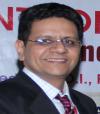What Causes Cough While Swallowing?

As below:
Detailed Answer:
Hi,
Thank you for your query.
1. Dry cough while swallowing food needs evaluation. The following is checked:
a. Dysphagia or difficulty in swallowing.
b. Aspiration and penetration into the Larynx/ Airway (cough)
c. Incomplete bolus clearance (Is the coughing more with liquids or solids?)
2. The following investigations should be done:
a. Throat examination and a videolaryngoscopy.
b. A Chest X-ray.
c. A barium swallow.
d. FEES (Fiberoptic Endoscopic Evaluation of Swallowing) and FEESST (Flexible Endoscopic Evaluation of Swallowing with Sensory Testing) are newer techniques for evaluation of swallowing.This includes examination of:
i. Anatomy in relation to swallowing function.
ii. Physiological compliance of velo-pharynx, pharynx and larynx.
iii. Airway protection, respiration and sensation during swallowing and non-swallowing tasks.
e. A Swallowing Signals Lab comprises of:
i. Manometry: Pharyngeal and upper esophageal manometry.
ii. EMG from oral and pharyngeal musculature.
iii. Nasal cannula for respiratory phase.
iv. Acoustic microphone for cervical auscultation.
v. Tongue array for pressure applied by tongue.
The Swallowing Signals Lab is used for diagnostic as well as therapeutic modalities.
3. If a neurological problem is ruled out, a post nasal drip or lymphoid hypertrophy in the throat may explain the cough. Acid reflux is usually a part of the complex. Decreased salivation, dryness of the throat due to mouth breathing/snoring/sleep apnea is another possible cause.
4. Swallowing therapy aims to reduce aspiration, to improve ability to eat and swallow and hence optimize the nutritional status with:
a. Certain dietary modifications (such as thickening of feeds).
b. Use of compensatory techniques / postural maneuvers to compensate for swallowing difficulty and prevent aspiration.
c. Use of oro- motor exercises to facilitate better, oral manipulation and chewing of bolus
d. Use of Direct therapy maneuvers to improve swallowing function.
I hope that I have answered your queries. If you have any further questions, I will be available to answer them.
Regards.
Answered by

Get personalised answers from verified doctor in minutes across 80+ specialties



